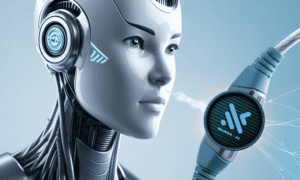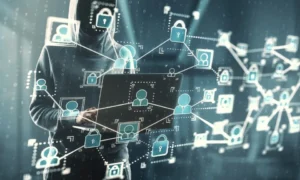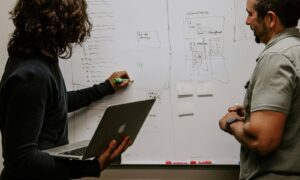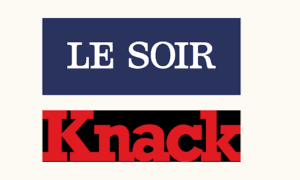Introduction
Technology continues to play a pivotal role in reshaping traditional learning methods. One such groundbreaking innovation that has been gaining momentum is augmented reality (AR). Augmented reality seamlessly blends the digital and physical worlds, creating an immersive and interactive learning experience. In this article, we will delve into the transformative impact of augmented reality on education and how it has the potential to revolutionize the way we learn and teach.
The Evolution of Education
Education has come a long way from chalkboards and textbooks. The advent of computers brought forth a new era, introducing digital tools and resources into classrooms. However, the integration of augmented reality takes this evolution to a whole new level. Unlike virtual reality, which creates a completely simulated environment, augmented reality overlays digital content onto the real world. This subtle yet powerful augmentation opens up endless possibilities for enhancing the educational experience.
Engaging Learning Environments
One of the primary advantages of augmented reality in education is its ability to create highly engaging learning environments. Traditional teaching methods often struggle to captivate students’ attention in an increasingly digital age. Augmented reality addresses this challenge by bringing lessons to life, making abstract concepts tangible, and sparking curiosity. For example, students studying astronomy can use AR to explore celestial bodies as if they were right in front of them, fostering a deeper understanding of the subject.
Personalized Learning Experiences
Every student is unique, and traditional one-size-fits-all teaching methods may not cater to individual learning styles. Augmented reality offers a solution by enabling personalized learning experiences. With AR, educators can tailor lessons to suit the pace and preferences of each student, ensuring a more effective and inclusive learning environment. This personalized approach fosters a sense of ownership and engagement, empowering students to take charge of their learning journey.
Real-world Applications
The applications of augmented reality in education extend beyond the confines of the classroom. Field trips, once limited by logistical constraints, can now be conducted virtually through AR. Imagine studying ancient civilizations by virtually exploring historical sites or dissecting a frog without the need for a physical specimen. Augmented reality extends the boundaries of learning, providing students with real-world experiences that were previously inaccessible.
Enhancing Collaboration and Communication
Education is not solely about acquiring knowledge; it also involves developing crucial interpersonal and teamwork skills. Augmented reality facilitates collaboration by enabling students to work together in virtual environments. Whether it’s solving complex problems, conducting experiments, or creating projects, AR fosters communication and teamwork. This collaborative aspect prepares students for the collaborative nature of the modern workforce, where effective communication and teamwork are essential.
Accessible Learning for All
Inclusivity is a key aspect of modern education, and augmented reality contributes to making learning accessible for all students, including those with diverse learning needs. AR applications can be customized to accommodate various learning styles, making it easier for educators to cater to students with different abilities. This inclusivity ensures that every student, regardless of their learning preferences, can benefit from the immersive and interactive nature of augmented reality.
Overcoming Learning Barriers
Traditional education often faces challenges in conveying complex or abstract concepts effectively. Augmented reality serves as a powerful tool to overcome these barriers by providing visual and interactive representations. Whether it’s exploring the human anatomy in 3D or simulating chemical reactions, AR makes abstract subjects more tangible and easier to grasp. This hands-on approach not only enhances understanding but also makes learning more enjoyable for students.
Preparing Students for the Future
As the world becomes increasingly digital, the skills required for success in the workforce are also evolving. Augmented reality equips students with the technological literacy and adaptability needed in the 21st century. Exposure to AR from an early age prepares students for a future where technology is seamlessly integrated into various aspects of their personal and professional lives. This technological fluency is a valuable asset in a rapidly changing global landscape.
Challenges and Future Prospects
While the potential of augmented reality in education is vast, it’s essential to acknowledge and address the challenges associated with its implementation. Technical constraints, cost considerations, and the need for teacher training are among the hurdles that need to be overcome. However, as technology continues to advance, these challenges are likely to diminish.
Looking ahead, the future of augmented reality in education is promising. As the technology becomes more accessible and refined, its integration into mainstream education is expected to increase. Moreover, ongoing research and development in AR applications will likely lead to even more innovative ways of enhancing the learning experience.
Conclusion
Augmented reality is a game-changer in the field of education, unlocking a wealth of possibilities for both educators and students. From creating immersive learning environments to fostering collaboration and inclusivity, AR has the potential to revolutionize how we approach education. As we embrace this technology, it’s crucial to remain mindful of the challenges and work collectively to ensure that augmented reality becomes a transformative force in shaping the future of learning. The journey has just begun, and the educational landscape stands on the brink of a remarkable transformation powered by the limitless potential of augmented reality.

































